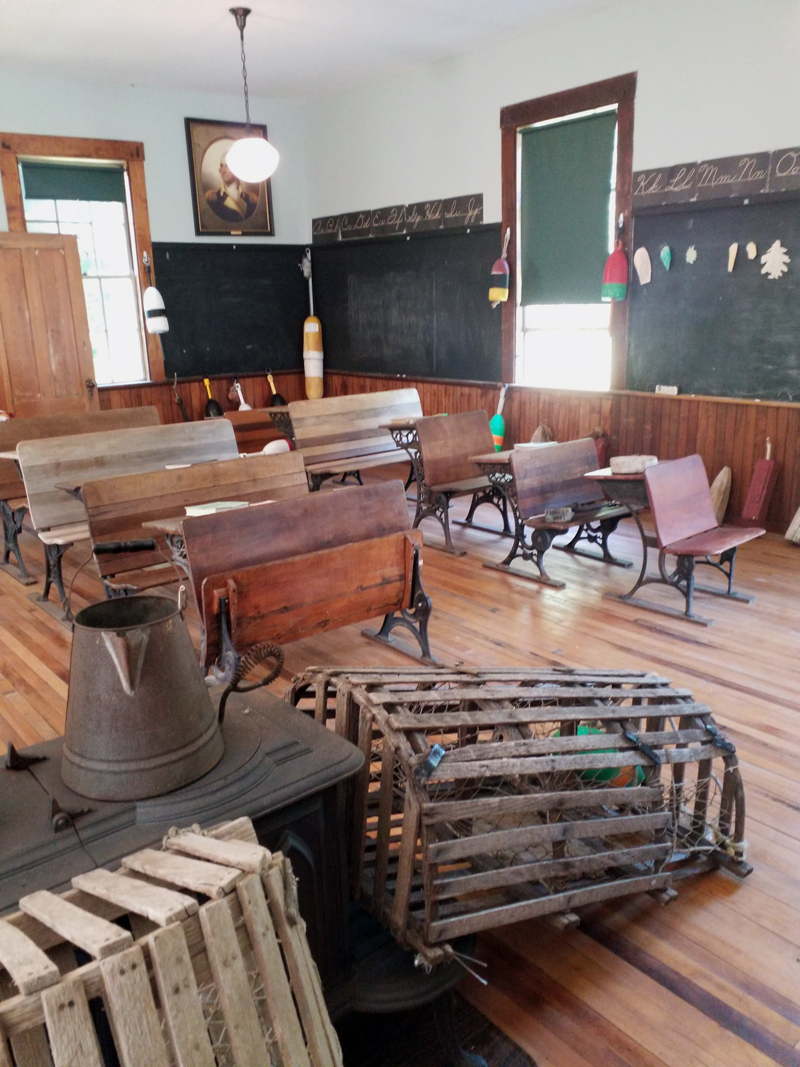
Wooden lobster traps on display.
Brightly colored pot buoys bob in the ocean all along the Maine coast. Each fisherman’s buoys have a unique color scheme. Visit the S Road School on Route 129 in South Bristol on Saturdays in August from 1-4 p.m. and step back a few years to the time when buoys were carved from wood rather than the Styrofoam creations that began to be used in the 1960s. The old wooden buoys varied in shape as well.
Wayne Eugley, a lobsterman who fishes out of South Bristol, has collected buoys from local fishermen, as well as examples of wooden lobster traps, which are on display. Buoys are a highly visible symbol of all that goes into bringing lobster to the table. This exhibit will help one understand some of the process.
Costs of equipment for lobstering have risen sharply in recent years. Vinyl-coated wire traps, which began to replace wooden traps in the mid 1980s, can run $90 each, with buoys, spindles, and rope adding another $25. Bait prices have soared recently, and, of course, the investment in boats and fuel is not insignificant, as is the yearly cost of a fishing license.
The South Bristol Historical Society opens this one-room school in the summer, and welcomes visits. One may also want to see the adjacent smokehouse, which is still used for smoking alewives.






